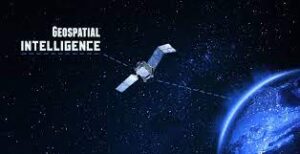Air Force Geospatial Intelligence Imagery Analyst: GEOINT Jobs
WANT TO KNOW, Air Force geospatial intelligence imagery analyst, GEOINT Jobs and more? Geospatial intelligence (GEOINT) is a discipline that involves the collection, analysis, and interpretation of geographic data to provide valuable insights and support decision-making. It encompasses the use of various technologies and techniques to understand and visualize the relationships between physical features, human activities, and the environment. What is GEOINT in full form is Geospatial Intelligence.
What is Geospatial Intelligence
GEOINT involves the acquisition of data from different sources, such as satellite imagery, aerial photography, remote sensing, and geographic information systems (GIS). These data sources provide detailed information about the Earth’s surface, including terrain, vegetation, infrastructure, and human settlements.
Through the analysis of geospatial data, patterns, trends, and relationships can be identified. Geospatial analysts use specialized software and tools to process and interpret the data, extracting meaningful information. This information can be used for a wide range of applications, including urban planning, natural resource management, environmental monitoring, disaster response, military operations, and business decision-making.

Geospatial intelligence is not limited to static maps but also involves the creation of dynamic visualizations and models. By integrating geospatial data with other data sources, such as demographic or economic data, analysts can gain a deeper understanding of spatial relationships and make more informed decisions.
The field of GEOINT continues to evolve with advancements in technology, including the use of artificial intelligence and machine learning algorithms to automate analysis and extract insights from large and complex datasets. These technological advancements enable more accurate and timely geospatial analysis, enhancing our understanding of the world and supporting various applications across different sectors.
Geospatial Intelligence USAF
GEOINT professionals in the United States Air Force (USAF) receive salaries based on their rank, years of service, and specialized skills. The specific salary ranges can vary and are subject to annual adjustments by the Department of Defense.
Geospatial Intelligence Imagery Analyst:
Geospatial intelligence analysis is a critical process that involves the examination and interpretation of geospatial data and imagery to provide valuable insights and intelligence for decision-making and operational planning.
A GEOINT analyst is a job title commonly found in the U.S. Army, where they are responsible for analyzing overhead and aerial imagery to provide critical information to support military operations. However, the skills and expertise of a GEOINT analyst can also be applied in various civilian sectors. They can work in law enforcement agencies, global humanitarian organizations, emergency response systems, investigative and forensic analysis consulting firms, as well as security consulting firms.
As a Geospatial Intelligence Imagery Analyst, your role will involve analyzing visual data to provide crucial information to Army leadership. Using various sources such as aerial imagery, geospatial data, and full-motion video, you will assist in determining target coordinates, identifying enemy positions, navigating obstacles, and developing defense and combat strategies.
GEOINT jobs include military intelligence, law enforcement, humanitarian organizations, emergency response, investigative analysis, and security consulting in both government and private sectors.
The current average geospatial intelligence salary for professionals in North Carolina, as of March 2024, is $35.22 per hour or approximately $73,259 annually.
Geospatial intelligence Air Force salary vary depending on rank, experience, and other factors. The average US Air Force Geospatial Intelligence salary as an analyst base is $71K per year.
Air Force geospatial intelligence bases include Beale Air Force Base, Joint Base Langley-Eustis, Joint Base San Antonio, and Wright-Patterson Air Force Base, among others.
Geospatial Intelligence Army
Examples of Geospatial Intelligence Air Force Bases
The United States Air Force operates numerous bases around the world that support geospatial intelligence operations. Some notable Air Force bases with geospatial intelligence capabilities include:
- Joint Base Langley-Eustis (Virginia, USA): Home to the 480th Intelligence, Surveillance, and Reconnaissance Wing, which conducts geospatial intelligence analysis and operations.
- Wright-Patterson Air Force Base (Ohio, USA): Hosts the National Air and Space Intelligence Center (NASIC), responsible for analyzing and producing geospatial intelligence related to air and space threats.
- Beale Air Force Base (California, USA): Houses the 548th Intelligence, Surveillance, and Reconnaissance Group, which specializes in geospatial intelligence analysis and collection using remotely piloted aircraft.
- Ramstein Air Base (Germany): Serves as the headquarters for the United States Air Forces in Europe – Air Forces Africa (USAFE-AFAFRICA), which includes geospatial intelligence capabilities supporting European and African operations.
-
Yokota Air Base (Japan): Supports geospatial intelligence activities in the Pacific region, including analysis and collection of geospatial data for operational planning.
What is the National Geospatial-Intelligence Agency
The National Geospatial-Intelligence Agency (NGA) is a U.S. government agency responsible for collecting, analyzing, and distributing geospatial intelligence (GEOINT) in support of national security. It provides critical geospatial information, including maps, imagery, and geospatial data, to support military operations, intelligence activities, and disaster response efforts. The NGA collaborates with other government agencies, the military, and international partners to gather and analyze geospatial data from various sources, including satellites, aerial imagery, and ground-based systems. Its mission is to provide accurate and timely geospatial intelligence to inform and enable decision-making at all levels of government.

The official website of the National Geospatial-Intelligence Agency
7500 GEOINT Drive
Springfield, VA 22150
NGA delivers superior geospatial intelligence to empower policymakers, warfighters, intelligence professionals, and first responders with a decisive advantage.
St Louis National Geospatial Intelligence Agency
The National Geospatial-Intelligence Agency (NGA) takes pride in its longstanding connection with St. Louis, which spans seven decades. The agency’s presence in St. Louis can be traced back to the year 1827, when the St. Louis Arsenal, now home to NGA, began producing and supplying small arms to the U.S. Army and settlers during the expansion of the western frontier. Throughout history, the Arsenal played vital roles in the Civil War, serving as a storage facility, outfitting troops, and repairing weapons. Following the war, the Army repurposed the Arsenal for various functions, including as a cavalry depot, clothing depot, and general Quartermaster Department depot.
United States Geospatial Intelligence Foundation scholarships
The United States Geospatial Intelligence Foundation (USGIF) offers scholarships to students pursuing education and careers in geospatial intelligence (GEOINT) fields. A $10,000 annual scholarship is presented to a student pursuing an undergraduate, graduate, or Ph.D. program in a GEOINT-related field. The recipient should exemplify AWS’s dedication to fostering Diversity, Equity, and Inclusion.
The USGIF scholarship program provides financial assistance to students at various levels of education, including undergraduate, graduate, and doctoral programs. Scholarships are awarded based on academic achievement, potential, and a demonstrated interest in GEOINT.
Since its inception in 2004, the scholarship program initiated by USGIF has provided over $1.7 million in awards to deserving recipients.
National Geospatial Intelligence Agency Internship
NGA offers numerous opportunities for students, particularly in science, technology, engineering, and mathematics (STEM) fields. Interns have the chance to apply their academic knowledge in practical settings, with on-the-job training filling any educational gaps. NGA employees are supportive and assist interns as they navigate their career paths.
Non-STEM majors need not worry, as NGA also provides internships in areas like communications and research. The agency encourages exploration beyond interns’ original areas of work, allowing them to gain exposure to various job options through shadowing experiences.
Many interns view the program as a stepping stone to a government career, with a high rate of interns receiving job offers upon graduation. The NGA internship serves as an entry-level position within the government and presents ample opportunities for career advancement. Through authentic work experiences, interns develop the skills and qualifications necessary to become strong candidates for future roles at NGA.
National Geospatial Intelligence Agency Contract Awards
On January 25, the National Geospatial-Intelligence Agency (NGA) awarded a new contract worth $794.1 million for Research Development Contract (RDC) services. The contract is indefinite-delivery and indefinite-quantity (IDIQ) and has a duration of five years, with an optional two-year extension. The four eligible companies to compete for task orders under this contract are Booz Allen Hamilton, Lockheed Martin Corporation, Reinventing Geospatial, Inc., and Solis Applied Science, LLC. The first task order for the IDIQ is expected to be completed in February 2024.
FAQs:

Geospatial Intelligence Analyst Job and Salary
Some of the tasks involved in exploiting and analyzing multi-sensor imagery and geospatial data, as well as performing targeting support, include:
- Analyzing multi-sensor imagery and geospatial data to extract relevant information and intelligence.
- Assessing terrain features and structures to determine their usability and identify potential threats.
- Using maps and geospatial tools to determine target locations and calculate distances.
- Compiling and maintaining imagery and target folders, organizing and updating relevant information.
- Conducting research and analysis on multi-sensor imagery, geospatial data, and related products to identify patterns, trends, and actionable intelligence.
- Supporting targeting efforts for development and combat assessment by providing accurate and timely information.
- Preparing and presenting intelligence reports to communicate findings and insights to decision-makers and stakeholders.
As of March 2024, the typical salary for a Geospatial Intelligence Analyst in the United States is approximately $37.26 per hour or around $77,494 annually on average.
What is the GEOINT Symposium
USGIF invites you to participate in the GEOINT Symposium, the largest annual gathering of geospatial intelligence professionals in the United States. With over 4,000 attendees from government, military, industry, and academia, this event offers a unique opportunity to engage with the GEOINT community. By joining the USGIF Community, which includes hundreds of corporate, federal, and academic entities, you can stay informed, gain insights from industry leaders, and contribute to shaping the future of geospatial intelligence.





